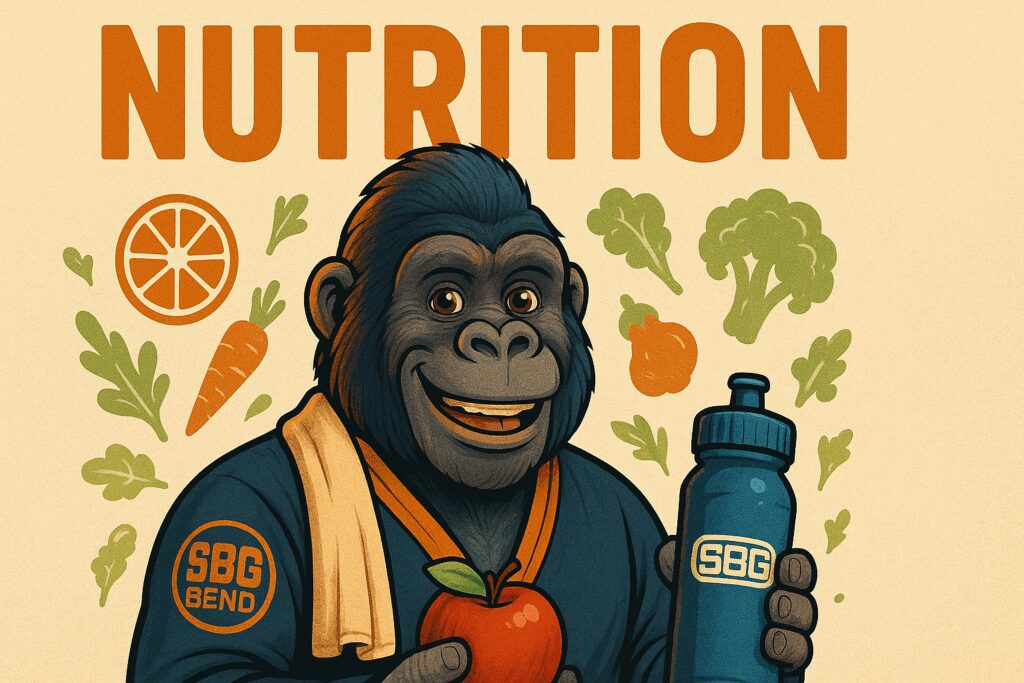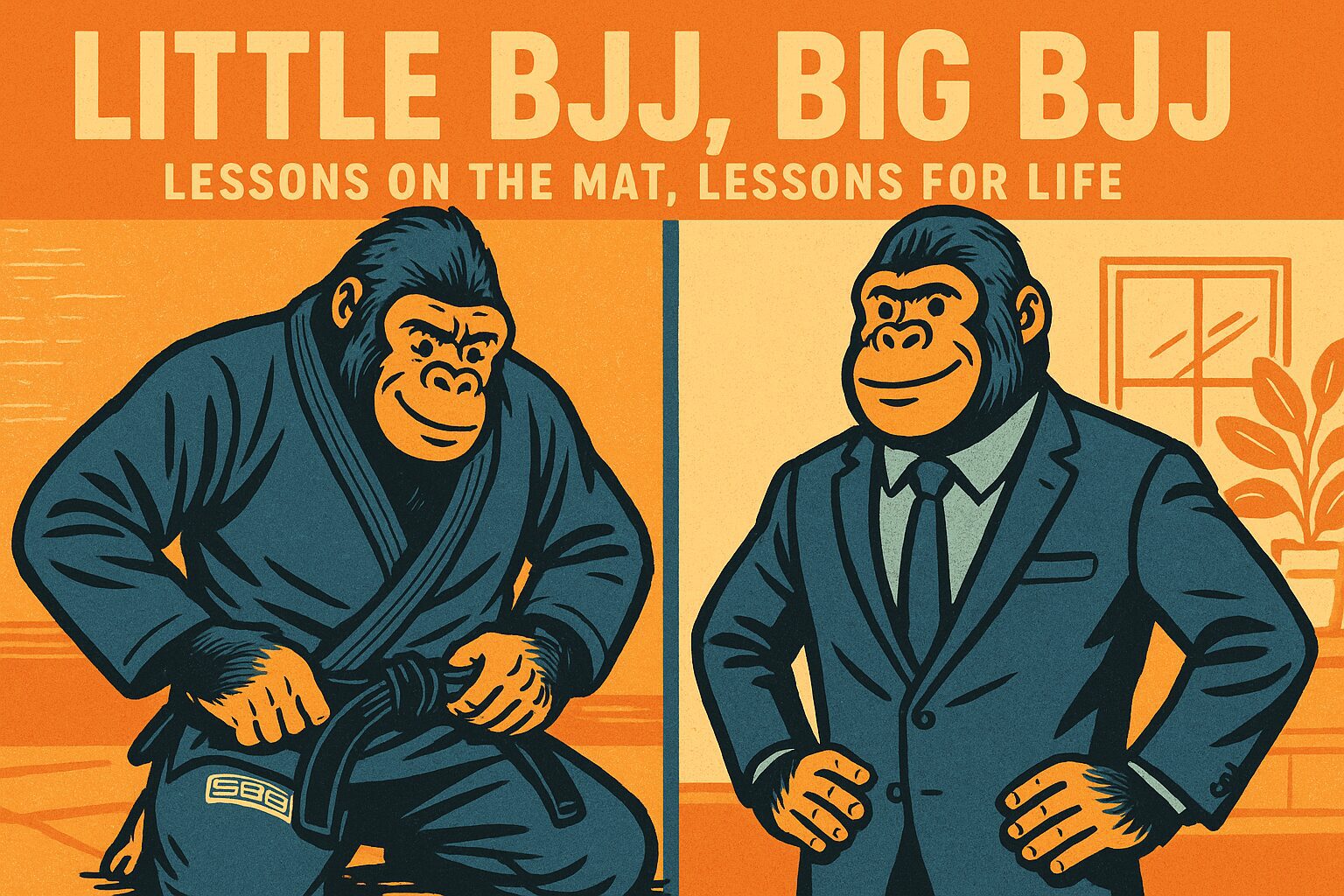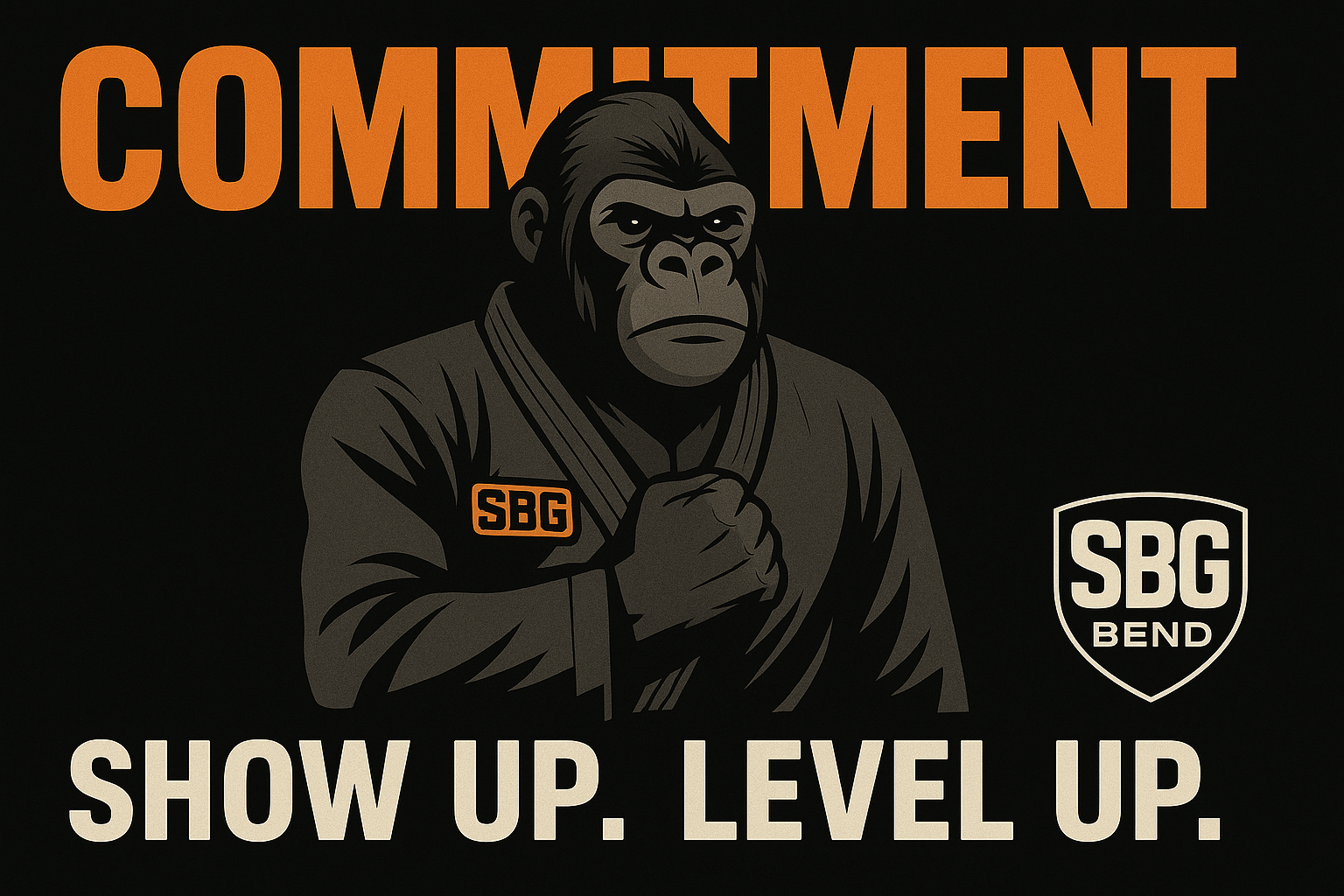
Parents of young Brazilian Jiu-Jitsu (BJJ) and martial arts students often focus on classes, technique, and discipline. But one of the biggest factors in your child’s success on the mats is what fuels their growing bodies off the mats. Proper nutrition isn’t about strict diets or sacrificing fun – it’s about giving kids the energy, focus, and strength they need to thrive in training and in daily life. In this post, we’ll explore why kids’ nutrition matters for martial arts, covering hydration, key nutrients, timing of meals, risks of poor fueling, and practical snack ideas. Our tone is supportive and non-judgmental – every parent is busy, but a few actionable tips can make a big difference. Let’s dig in!
Why Nutrition Matters for Young Martial Artists
Just like a car can’t run on empty, kids can’t perform their best in BJJ or any sport without the right fuel. Nutrition plays a critical role in both physical and mental development. A well-fed child will have the energy to drill techniques, spar playfully, and still focus in class after a long school day. On the other hand, training on an empty stomach or a poor diet can leave kids feeling sluggish or dizzy, and over time it may even affect their growth. Key benefits of proper nutrition for kids in martial arts include:- Steady Energy: The right balance of carbohydrates, protein, and fats provides lasting energy for class. Carbs (found in whole grains, fruits, etc.) are the primary fuel for active muscles. Proteins (from lean meats, dairy, beans) help build and repair muscle. Healthy fats (from nuts, avocados, fish) provide endurance and help absorb vitamins. A well-rounded diet with all these macronutrients, plus plenty of vitamins and minerals, ensures young martial artists can train hard and recover well.
- Improved Performance: When children eat balanced meals, they often feel stronger and more alert during training. In fact, experts note that kids who stay hydrated and stick to wholesome carbs and protein outperform those loaded up on sugary or fatty foods. Simply put, a nourished body kicks higher, rolls longer, and learns faster.
- Overall Growth & Health: Growing children have high nutrient needs. Calcium and vitamin D strengthen their bones (important for all those jumps and rolls!), iron carries oxygen to their muscles, and antioxidants from fruits/veggies support their immune system. Good nutrition helps prevent injuries and keeps your child healthier year-round.
Hydration: The Hidden Hero
If food is fuel, water is the oil that keeps everything running smoothly. Proper hydration is absolutely crucial for young athletes. Even mild dehydration can sap a child’s strength and concentration. In worse cases, dehydration can decrease performance and put kids at risk for heat exhaustion – especially on hot days or during intense training. Tips to keep your child hydrated:- Pack a Water Bottle: Make sure your child sips water throughout the day and brings a water bottle to class. Remind them to drink during breaks. As a rule of thumb, kids should drink about half their body weight in ounces of water per day (e.g. a 60 lb child needs ~30 oz) – more on training days.
- Pre-Class and Post-Class: Encourage drinking water in the hour before class and plenty after. This helps prevent cramps and fatigue while they exercise.
- Skip the Sugary Sports Drinks: For most one-hour classes, plain water is best. Save sports drinks for very long or sweaty sessions – frequent use can add unnecessary sugar. A natural option like coconut water can be a refreshing post-class treat with some electrolytes.
- Watch for Signs: Teach kids to listen to their bodies. Dry mouth, feeling lightheaded, or an unusually flushed face can be signs of dehydration. When in doubt, take a water break!
Building Blocks: Key Nutrients for Kids Who Train
What does a “balanced diet” really mean for a young martial artist? It’s simpler than it sounds. It means including a mix of all the major nutrient groups each day so that your child’s body and brain get everything they need. Here’s a quick rundown:- Carbohydrates – Quick Energy: Kids burn a lot of energy in BJJ class. Carbs are the body’s primary fuel, especially for high-intensity play and exercise (pmc.ncbi.nlm.nih.gov). Focus on complex carbs like whole-grain bread, brown rice, whole-wheat pasta, oatmeal, and potatoes to provide steady energy. Fruits are also great for quick, natural sugar boosts. Tip: A banana or apple before class can give an energy kick without weighing them down.
- Protein – Muscle Repair: Training BJJ uses lots of muscles, and protein helps those muscles recover and grow stronger (pmc.ncbi.nlm.nih.gov). Lean proteins such as chicken, turkey, fish, eggs, beans, or dairy (cheese, yogurt) are excellent choices for kids. For example, a turkey sandwich or a cup of Greek yogurt after class can help repair muscles. Protein at breakfast (like eggs or yogurt) also keeps them full and focused in school and ready for afternoon training.
- Healthy Fats – Endurance & Nutrient Absorption: Fats often get a bad rap, but healthy fats are vital for long-lasting energy and absorbing vitamins (pmc.ncbi.nlm.nih.gov). Include sources like avocados (try some guacamole!), nuts and nut butters, olive oil, or fatty fish like salmon. These support brain development too. Just keep fried and junk foods limited – those bring mostly unhealthy fats that can make kids feel sluggish.
- Vitamins & Minerals – The Small but Mighty Nutrients: Growing kids need micronutrients for everything from bone strength to concentration. Calcium (in milk, cheese, leafy greens) builds strong bones and kicks; iron (in meats, beans, spinach) helps carry oxygen for endurance. Don’t forget vitamin C (berries, oranges, bell peppers) for immune health, and B-vitamins (whole grains, veggies) for energy metabolism. A colorful plate is the easiest way to cover the bases – think orange carrots, green broccoli, red strawberries, etc. Each color brings its own benefits! (graftonmartialarts.com)
The Timing: When and What to Eat Around Training
Busy families know the pre-class rush all too well – homework, car rides, and figuring out “what can my kid eat so they won’t get a stomach cramp during class?” Timing meals and snacks around martial arts training can be tricky, but a few guidelines can help:- Avoid Heavy Meals Right Before Class: If junior’s BJJ class is at 5 pm, a large 4:45 pm dinner of burger and fries is not a good idea. Heavy, fatty meals take time to digest and will make kids feel slow and sluggish on the mats (uchicagomedicine.org). High-fiber foods (beans, lots of raw veggies) right before exercise can also cause stomach discomfort (uchicagomedicine.org). Aim to have a substantial meal 2–3 hours before training if possible. For example, an after-school meal at 3 pm could be grilled chicken, whole-grain rice, and veggies – giving protein and carbs time to digest (gbgreensboro.com).
- Pre-Class Snack: If it’s been a while since lunch or your child needs a pick-me-up closer to class, give a light snack ~30–60 minutes before training (gbgreensboro.com). The best pre-workout snacks for kids are high in carbs and easy to digest. Think of options like:
- A piece of fruit (banana, orange slices, a few berries).
- A slice of whole-grain toast with a thin spread of peanut butter.
- A small granola bar (lower sugar) or a handful of pretzels.
- Yogurt with a drizzle of honey.
- Post-Class Fuel: After class, especially an intense one, kids should refuel within an hour. This is when their bodies crave nutrients to recover. If dinner time aligns, great – include protein and carbs (maybe a stir-fry with chicken and veggies over rice, or tacos with meat and avocado). If dinner is later, even a small post-training snack helps: chocolate milk is a favorite recovery drink for many young athletes (it has a good carb-to-protein ratio), or something like a cheese stick and an apple. This replenishes energy stores and starts repairing muscles so they won’t be as sore.
- Pro Tip: Establish a routine. For example, “Water and a banana on the way to the gym, and chocolate milk on the ride home.” Kids find comfort in routine, and their bodies perform better when fuel timing is consistent. Over time, they’ll learn to sense what their body needs – a fantastic skill for lifelong health.
Risks of Poor Nutrition and Under-Fueling
What if a child regularly trains on junk food, or skips meals? In the short term, you might notice they run out of steam midway through class or struggle to concentrate during technique instruction. In the long term, the effects can be more serious than just a slow class. Here are some risks of poor nutrition or under-fueling for young martial artists:- Low Energy & Weak Performance: Kids who don’t eat enough healthy food may feel fatigued and unable to fully participate. Their reaction times slow down. You might see them taking more breaks or getting light-headed. In BJJ, where quick reflexes and constant movement are key, lack of fuel is like trying to roll with a phone battery at 10%.
- Mood and Focus Issues: Ever gotten “hangry” (hungry-angry)? Kids feel it too. Research shows that an inadequate diet can contribute to increased stress, irritability, and mood swings in children. Moreover, poor nutrition impairs cognitive functions like memory and focus. That means a child who hasn’t eaten well might struggle to pay attention to their coach’s instructions or get frustrated more easily. Over time, this can chip away at their confidence and enjoyment in class (not to mention affect school performance).
- Safety Risks: Dizziness, fainting, or lack of coordination can occur if a child’s blood sugar drops too low during exercise. Dehydration can lead to headaches, cramps, or even heat exhaustion in extreme cases. A poorly fueled body simply isn’t as protected – tired muscles and lack of focus can also make injuries more likely. We never want a child to push themselves to the point of harm. Proper fueling is a safety issue as much as a performance one.
- Slow Progress & Recovery: Training hard on a poor diet is like building a house with subpar materials. Kids might hit plateaus faster; their muscles don’t recover as quickly, so they might be sore longer or more prone to overuse injuries. They also might not see improvements despite practice, which can be discouraging. On the flip side, kids who eat well often notice more consistent gains in strength and technique – their bodies adapt better to the training.
Smart Snack and Lunch Ideas (Practical Tips)
Nutrition for young athletes doesn’t need to be gourmet. In fact, simple is usually best – for your schedule and their taste buds. Here are some practical snack and meal ideas to keep your BJJ kid fueled and happy:- Before Class Snacks: Keep these light and carb-focused. Great options include a banana or half a banana (natural electrolytes and easy carbs), a small handful of trail mix (go easy on the candy pieces), carrot sticks with hummus, or a cup of applesauce. These will top off energy without overfilling. Pro tip: If coming straight from school, pack a snack for the car ride to the gym.
- After School Mini-Meal: If there’s a gap of a couple hours before class, treat this like a mini meal. A peanut butter and jelly sandwich on whole wheat bread strikes a nice balance of carbs and protein. Or try roll-ups: a whole-grain tortilla with turkey and cheese, sliced into pinwheels. Even last night’s leftovers (a small portion of chicken and pasta, for example) can work. Aim for something filling but not heavy. This will carry them through class and can be followed by a lighter dinner later.
- Healthy Lunch for School: On training days, lunch becomes extra important. Lean protein + complex carb + fruit/veg is a winning formula. For example, pack a turkey-and-cheese sandwich (or wrap), a side of fruit (orange slices or grapes), and some baby carrots or cucumber. If your child buys lunch, encourage them to include the veggie and avoid sugary drinks. A balanced lunch ensures they aren’t running on empty by 3pm.
- Hydration Boosters: Water is number one, but you can also hydrate through food. Pack juicy fruits like watermelon, oranges, or grapes. Even a smoothie can be a hydration + nutrition boost (blend yogurt, fruit, and a little milk – kids think it’s a treat!). After a sweaty open mat or summer camp session, consider coconut water or a homemade electrolyte drink (water with a splash of 100% fruit juice and a pinch of salt) to replenish.
- Fun and Portable Snacks: Kids love finger foods. Some parent and SBG Bend favorites: string cheese and whole-grain crackers; yogurt tubes (freeze them for a slushy texture by snack time); fruit slices, cheese sticks, or whole grain crackers with hummus; homemade “energy balls” (oats, peanut butter, honey rolled into balls – no cooking needed). These snacks are easy to munch and full of goodness.
Fueling for Mood, Focus, and Confidence
We’ve talked a lot about muscles and energy, but let’s not forget the mental side of martial arts. BJJ isn’t just physical; it’s often called “human chess” because of the strategy and focus involved. The right nutrition can help your child stay mentally sharp and emotionally balanced during class, which means better learning and a more positive experience.- Stable Blood Sugar = Steady Mood: Ever notice a kid bouncing off the walls after a sugar rush, then crashing into a cranky mood? We want to avoid that on training days (and every day). A balanced meal or snack prevents the wild glucose spikes that sweets and sodas can cause. Complex carbs release energy slowly, and pairing them with protein or fat (like peanut butter with apple slices) further stabilizes blood sugar. The result? More stable moods and fewer mid-class meltdowns. Your child is more likely to engage happily rather than ride an energy rollercoaster.
- Better Focus and Learning: A child who isn’t distracted by hunger or wired on candy will simply pay better attention. Nutrients like omega-3s (found in fish, walnuts) and iron (in lean red meat, spinach) are known to support cognitive function. Even hydration plays a role in concentration – mild dehydration can make kids feel foggy. On the flip side, a well-nourished brain can absorb instructions from the coach, remember techniques, and make quick decisions during sparring. In fact, studies have found that poor nutrition is associated with diminished memory and organizational skills in kids. Food for thought – literally!
- Confidence and Mood: This one is a bit more subtle but so important. When kids consistently come to class feeling good – not weighed down by a heavy meal, not weak from skipping lunch – they perform better. They might get that sweep they’ve been working on, or simply have more fun rolling. These little wins boost their confidence. Conversely, if a child frequently feels sick or tired at class, they might start dreading it or doubting themselves. We want class to be a positive outlet, not something that makes them feel bad. Ensuring they’re properly fueled is a loving way to set them up for a happy, confident class experience.
- Long-Term Healthy Habits: Lastly, by prioritizing nutrition for your young martial artist now, you’re instilling life skills. They gradually learn that how they treat their body affects how they feel and perform. That’s a lesson that extends far beyond the dojo. As they grow into teens and adults, they’ll carry forward the understanding that eating well helps them study better, work better, and live better. It’s truly an investment in their future success – on and off the mat. We like to call it “fueling the future.”





